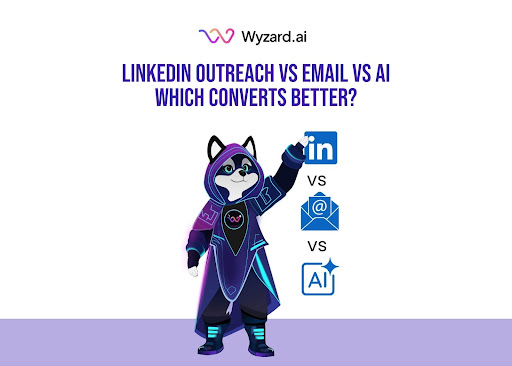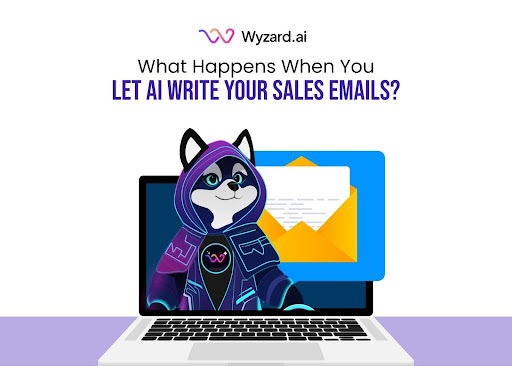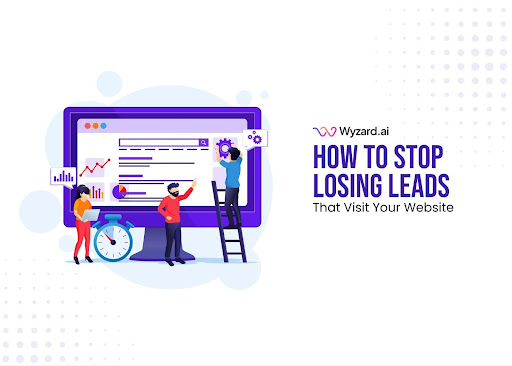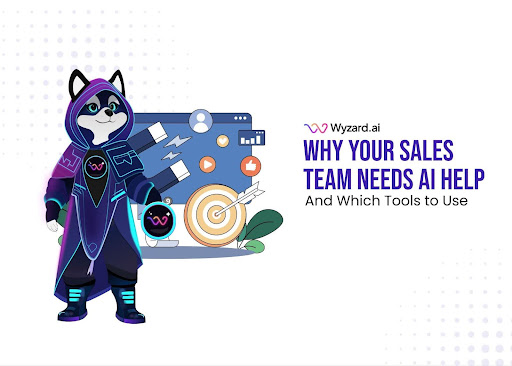Your sales team sends hundreds of emails weekly, but response rates keep dropping. You've heard about AI email writing ...

Subscribe Now
Your sales team sends hundreds of messages each week. LinkedIn connections go unanswered. Cold emails land in spam folders. Meanwhile, your competitors are booking meetings while you’re still waiting for replies.
The problem isn’t your messaging; it’s scattered signals and delayed follow-ups. When a prospect shows interest on LinkedIn but your team doesn’t see it until days later, that buying moment vanishes. When email responses sit unread because your reps are juggling multiple tools, revenue opportunities slip away.
Here’s what most GTM teams miss: it’s not about choosing LinkedIn or email or AI. It’s about understanding which channel converts better for specific scenarios and how AI orchestrates them together. Let’s break down the real performance data.
Why Response Rates Drive Pipeline Efficiency
Before comparing channels, let’s address what matters most: converting conversations into a qualified pipeline without adding headcount.
Response rates directly impact your sales team’s efficiency. When only 2% of your emails get replies, your reps spend weeks chasing dead ends. When 20% of LinkedIn messages spark conversations, those same reps fill their calendars faster.
The math is simple. If your team sends 500 outreach messages weekly with a 2% response rate, you get 10 conversations. Bump that to 15%, and suddenly you have 75 conversations, without hiring more SDRs. That’s the efficiency gain B2B SaaS teams need.
LinkedIn Outreach Automation: The High-Touch Advantage
LinkedIn outreach tools deliver something email can’t match: context and credibility baked into every message.
Research shows LinkedIn messages achieve response rates between 15-25%, with some highly personalized campaigns reaching 85% reply rates. Compare that to cold emails’ 1-5% average, and the difference becomes clear.
Why does automated LinkedIn outreach perform better?
Professional Environment Creates Trust. When someone receives your message on LinkedIn, they can immediately see your profile, mutual connections, and shared experiences. This built-in verification reduces skepticism. Your message doesn’t arrive as an anonymous email; it comes with social proof attached.
Rich Data Enables True Personalization. LinkedIn profiles reveal recent posts, job changes, company news, and shared interests. Sales email automation tools struggle to access this depth of information. When you reference a prospect’s recent article or congratulate them on a promotion, you’re not guessing; you’re responding to visible signals.
Higher Meeting Conversion Rates Getting a reply is just step one. LinkedIn’s professional context means replies turn into meetings more efficiently. When prospects engage on LinkedIn, they’re already in a business mindset, making the transition from conversation to calendar invite more natural.
The limitation? Volume. LinkedIn restricts connection requests to roughly 100 per week, and aggressive automation risks account restrictions. This is where understanding your ideal customer profile becomes critical; you need precision over spray-and-pray tactics.
Email Sales Automation: Scale Meets Efficiency
Email remains the workhorse for reaching large audiences cost-effectively.
Cold email campaigns can reach thousands of prospects simultaneously. While average open rates hover around 15-28%, and response rates typically fall between 1-5%, the ability to scale makes email indispensable for pipeline generation.
Where Email Excels
Volume and speed define email’s strength. Your team can launch campaigns targeting specific segments, say, all VPs of Marketing at Series B SaaS companies, and reach them within hours. Email automation platforms handle follow-ups, track engagement, and manage sequences without manual intervention.
Email also wins for detailed communication. Sharing case studies, product demos, or technical specifications works better in email format than LinkedIn messages. Prospects can review information on their schedule and forward it to decision-makers easily.
The Deliverability Challenge
Email’s biggest hurdle is visibility. Spam filters, promotional tabs, and overflowing inboxes mean many messages never get seen. Even well-crafted emails face a 70-80% chance of being ignored simply because they don’t stand out among dozens of other vendor messages.
This is where AI-powered email management changes the equation. Modern AI tools help optimize send times, personalize subject lines at scale, and identify which prospects are most likely to engage, turning email from a numbers game into a targeted strategy.
How AI Transforms LinkedIn vs Email Outreach
AI isn’t a third channel; it’s the orchestration layer that makes both channels perform better.
Think of AI as your signal-to-revenue engine. It captures buying signals from LinkedIn, email, website visits, and other touchpoints, then triggers the right follow-up through the right channel at exactly the right moment.
Hyper-Personalization at Scale
Traditional sales engagement platforms let you insert merge tags, first name, company name, and industry. AI goes deeper. It analyzes recent LinkedIn activity, company news, competitor mentions, and engagement patterns to craft messages that feel genuinely personal.
Studies show AI-driven messages achieve response rates nearly 61% higher than manually crafted ones. The AI isn’t just filling in blanks; it’s understanding context and adapting tone based on what’s working with similar prospects.
Intelligent Multi-Channel Orchestration
Here’s where AI truly separates leaders from laggards: knowing when to use LinkedIn versus email for each prospect.
Wyzard.ai’s approach exemplifies this. When a prospect visits your pricing page, the platform doesn’t just log that signal; it instantly determines whether to send a LinkedIn message, email, or both based on that person’s engagement history. If they’ve opened three emails but never clicked, AI might trigger a LinkedIn message instead. If they engaged on LinkedIn last month but went quiet, a personalized email re-engagement sequence starts automatically.
This isn’t about bombarding prospects. It’s about reaching them through the channel they prefer at the moment they’re showing interest. Explore how top use cases of AI email agents enable this level of coordination.
Automated Response Handling
AI monitors replies across channels, categorizing them as interested, not interested, requesting more information, or needing human involvement. This alone saves sales teams 15+ hours weekly, time they can spend actually talking to interested buyers rather than sorting through inbox noise.
Comparing Conversion Rates: The Data Behind Each Channel
Let’s cut through the marketing fluff and look at actual performance metrics:
| Metric | LinkedIn Outreach | Email Outreach | AI-Enhanced Multi-Channel |
| Response Rate | 15-25% (up to 85% with high personalization) | 1-5% (up to 10% with personalization) | 35-40% (combined approach) |
| Open/Visibility Rate | ~100% (direct inbox delivery) | 15-25% (spam filters impact) | Optimized per channel |
| Meeting Conversion | Higher (professional context) | Lower (requires more touchpoints) | 3-4x higher than single channel |
| Best For | High-value accounts, relationship building | Large-scale campaigns, nurture sequences | Strategic accounts needing multiple touchpoints |
| Scalability | Limited (~100 connections/week) | High (thousands per day) | Balanced based on prospect signals |
| Cost Per Meeting | Moderate (time investment in personalization) | Lower (automated at scale) | Optimized (AI directs effort) |
Key Takeaways from Real Campaigns:
- LinkedIn-first strategies work best for accounts requiring relationship building and where decision-makers are active on the platform
- Email sequences excel at nurturing prospects over time and maintaining consistent touchpoints with large target lists
- AI-orchestrated multichannel outreach delivers the highest conversion rates by leveraging each channel’s strengths at the optimal moment
One B2B SaaS company using automated LinkedIn outreach alongside email sequences saw 30% more meetings booked than email-only campaigns, but the real win came when they added AI to determine which prospects got which approach. Meeting bookings increased by another 40%.
Multichannel Outreach: Combining LinkedIn, Email, and AI
The debate isn’t really “LinkedIn versus email”, it’s “how do I orchestrate both effectively?”
The Sequential Approach That Works
Successful teams follow a signal-based strategy:
- Initial Contact via LinkedIn: Use LinkedIn outreach tools to send personalized connection requests and first messages to target accounts
- Email Follow-Up: If LinkedIn engagement is low after 5-7 days, shift to email sequences
- AI-Driven Prioritization: Let AI identify which prospects are engaging across any channel and prioritize those for rep attention
- Cross-Channel Retargeting: When someone opens an email but doesn’t reply, trigger a relevant LinkedIn message referencing the email topic
This sequence doesn’t double your outreach volume; it increases touchpoint quality. Understanding speed-to-lead across LinkedIn and email sequences shows why timing matters as much as channel selection.
Where Wyzard.ai Fits In
Wyzard, the Signal-to-Revenue AI, solves the core problem: scattered signals across tools that never trigger coordinated action.
When a prospect visits your website, responds to an email, or engages with LinkedIn content, those signals often live in separate systems. By the time someone manually pieces together that this prospect is showing strong interest, the buying moment has passed.
Wyzard.ai captures these signals in real-time and orchestrates immediate, appropriate follow-ups. It’s not another sales engagement platform adding to your stack; it’s the AI layer connecting your existing tools and ensuring no signal goes unnoticed, no follow-up gets delayed.
Practical Integration Example
Let’s say your target prospect, a CMO at a Series B company, visits your pricing page at 2 PM. Within seconds:
- Wyzard.ai identifies this as a high-intent signal
- Checks that the prospect’s engagement history (opened 2 emails, accepted LinkedIn connection last month)
- Triggers a personalized LinkedIn message referencing their pricing page visit
- If no response within 48 hours, it automatically queues a value-focused email
- Alerts your rep only when the prospect responds or shows additional high-intent behavior
Your rep didn’t manually monitor website visitors or set calendar reminders. AI handled the orchestration based on the signals that matter. That’s how modern teams increase pipeline efficiency without scaling headcount.
Choosing the Right Sales Engagement Platform for Your Team
Decision time: which approach fits your GTM strategy?
Choose LinkedIn-focused automation if:
- Your average contract value justifies high-touch, personalized outreach
- Decision-makers in your ICP are active LinkedIn users
- You’re targeting defined accounts (ABM approach) rather than casting a wide net
- Building relationships and establishing credibility is critical to your sales process
Choose email-centric automation if:
- You need to reach large volumes quickly
- Your sales cycle requires extensive nurturing and education
- Decision-makers prefer email communication (common in certain industries)
- Cost per outreach attempt is a primary concern
Choose AI-powered multichannel orchestration if:
- You’re serious about maximizing conversion rates
- Your team struggles with signal management across multiple tools
- You need efficiency gains without adding headcount
- You want data-driven decisions on which prospects get what type of outreach
Most growth-stage B2B SaaS companies fall into that third category. You can’t afford to ignore LinkedIn’s superior response rates, but you also need email’s scale. And you definitely can’t manually coordinate both while tracking signals across your website, CRM, and marketing automation platform.
Learn how AI agents are transforming cold email outreach and why the future belongs to integrated, intelligence-driven approaches.
Ready to Stop Losing Revenue to Scattered Signals?
Wyzard.ai connects your GTM tools, captures buyer signals instantly, and orchestrates automated follow-ups across LinkedIn, email, and every other channel that matters. No more manual monitoring. No more delayed responses. Just faster pipeline growth with the team you have today.
See Wyzard.ai’s integrations with your existing stack, or explore how Wyzard.ai turns buying signals into revenue opportunities in real-time.
The question isn’t which channel converts better; it’s whether your current approach captures and acts on every signal fast enough to win deals. Because while you’re debating LinkedIn versus email, your competitors using AI-orchestrated multichannel outreach are already booking those meetings.
FAQs
Q1: Can I use LinkedIn outreach automation without risking my account?
Yes, when done correctly. Stay within LinkedIn’s limits of roughly 100 connection requests per week, personalize messages using AI, and avoid aggressive bot-like behavior. Tools that mimic human patterns and respect platform guidelines keep your account safe while scaling outreach.
Q2: How does AI improve email sales automation beyond basic personalization?
AI analyzes engagement patterns, optimal send times, and buyer signals across multiple channels to determine which prospects should receive emails versus LinkedIn messages. It also monitors replies automatically and categorizes them, saving your team 15+ hours weekly on manual inbox management.
Q3: What response rate should I expect from multichannel outreach?
Combined LinkedIn and email campaigns orchestrated by AI typically achieve 35-40% response rates compared to 15-25% for LinkedIn alone or 1-5% for cold email. The key is using AI to determine which channel reaches each prospect at the right moment based on their engagement signals.
Q4: Does Wyzard, the Signal-to-Revenue AI replace my existing sales engagement platform?
No, Wyzard.ai connects your existing tools rather than replacing them. It captures buyer signals from your website, CRM, email platform, and LinkedIn, then orchestrates automated follow-ups across channels. Think of it as the intelligence layer that makes your current stack work together seamlessly.
Q5: How quickly can I see results from automated LinkedIn outreach?
Most teams see initial responses within 3-5 days of launching personalized LinkedIn campaigns. However, meaningful pipeline impact typically appears within 3-4 weeks as you refine messaging based on AI-driven insights and build a consistent cadence of quality outreach across both LinkedIn and email.
Other blogs
The latest industry news, interviews, technologies, and resources.
How to Stop Losing Leads That Visit Your Website
You've invested in driving traffic to your website. Visitors are arriving, but they're leaving without converting. If you're watching ...

Why Your Sales Team Needs AI Help and Which Tools to Use
Your sales team just spent three hours chasing down a lead who showed interest two days ago. By the ...

 We’ve secured funding to power Signal-to-Revenue AI to GTM teams globally. →
We’ve secured funding to power Signal-to-Revenue AI to GTM teams globally. →



